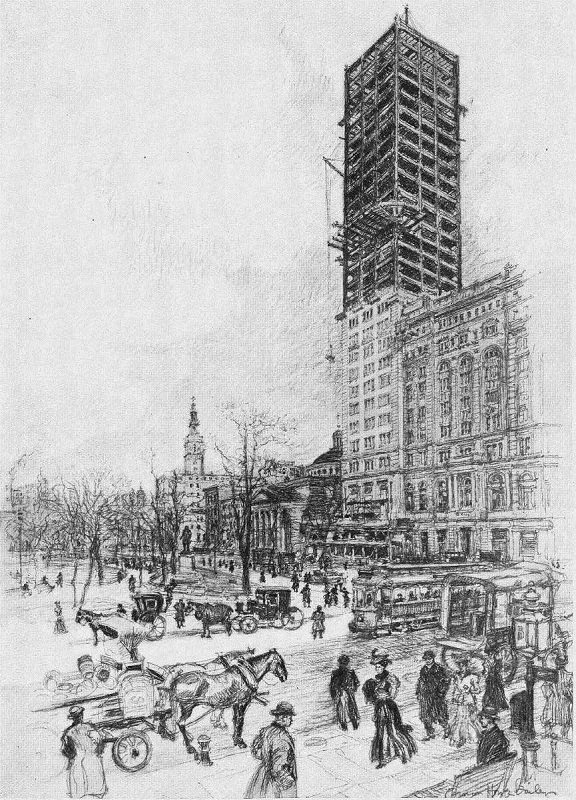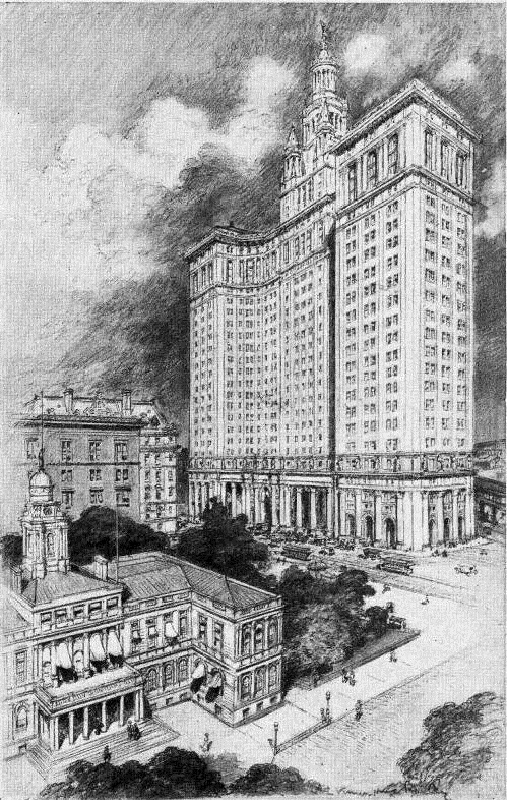3. Vernon Howe Bailey
 “As New York Climbs Skyward” by Vernon Howe Bailey, Harper’s Weekly, 1 February 1908
“As New York Climbs Skyward” by Vernon Howe Bailey, Harper’s Weekly, 1 February 1908
A native of Camden, New Jersey who attended the same Philadelphia art schools as Charles Sheeler, Vernon Howe Bailey (1874-1953) settled in New York after stints in Boston and London. Primarily an illustrator for newspapers and magazines who specialized in drawings of architecture and street scenes, Bailey was similar to Ferriss in that he was required to be faithful to the details of his subjects but nevertheless imbued his drawings with impressionistic influences that elevated him above most of his peers.
 “New York’s City Hall of To-morrow,” by Vernon Howe Bailey, Harper’s Weekly, 7 October 1911
“New York’s City Hall of To-morrow,” by Vernon Howe Bailey, Harper’s Weekly, 7 October 1911
His drawings shown here are of the Metropolitan Life Tower at Madison Square Park under construction, with the second Madison Square Garden in the background, and a rendering of the Municipal Building in Lower Manhattan and nearby City Hall, showing the contrast between early nineteenth and early twentieth century civic architecture.
Architect Cass Gilbert, who wrote the introduction to Bailey’s 1928 book Skyscrapers of New York, observed that Bailey “with skillful, subtle line and well-accented light and shade, has shown in black and white that the skyscrapers of New York form the most picturesque group of buildings in the whole world.” Of course, as one of New York’s foremost skyscraper architects, Gilbert may have been a bit biased.





